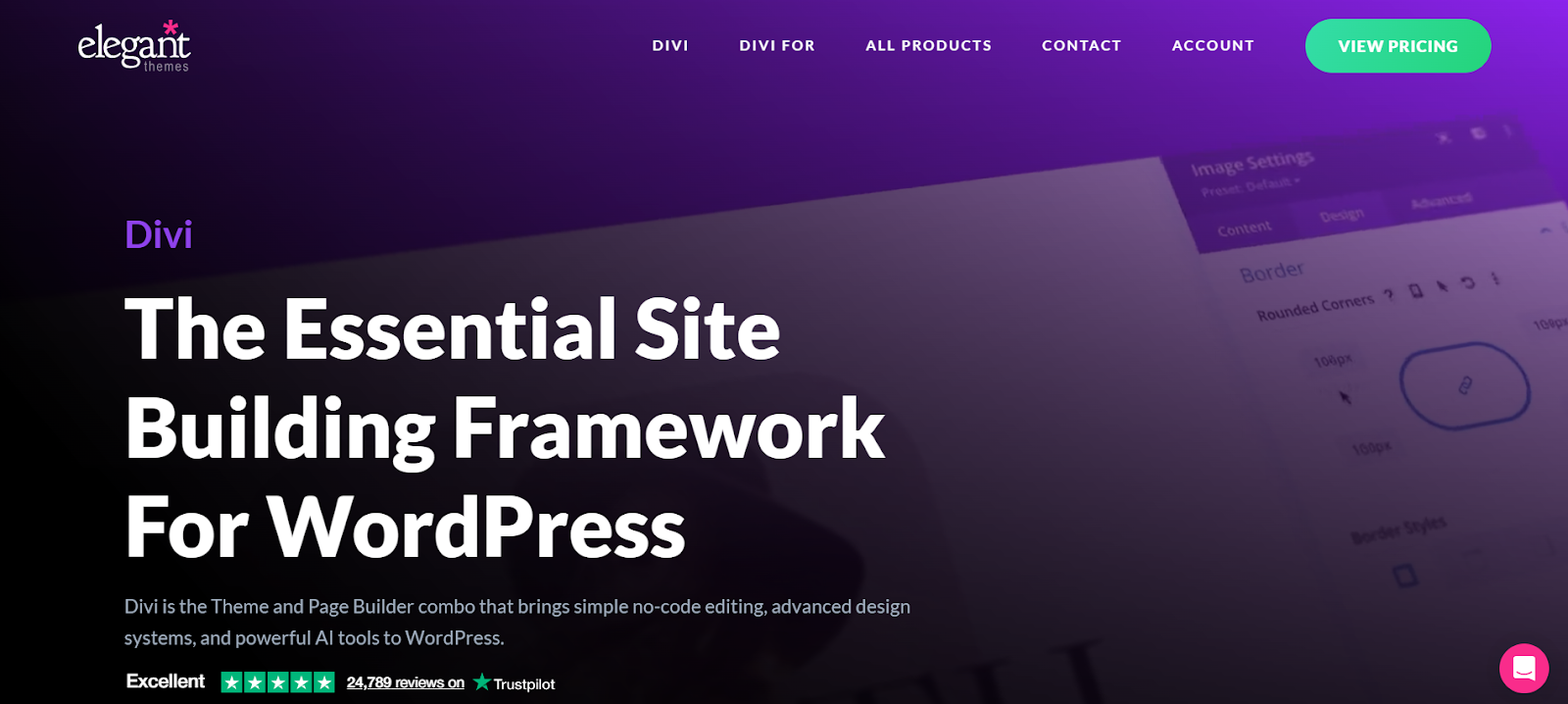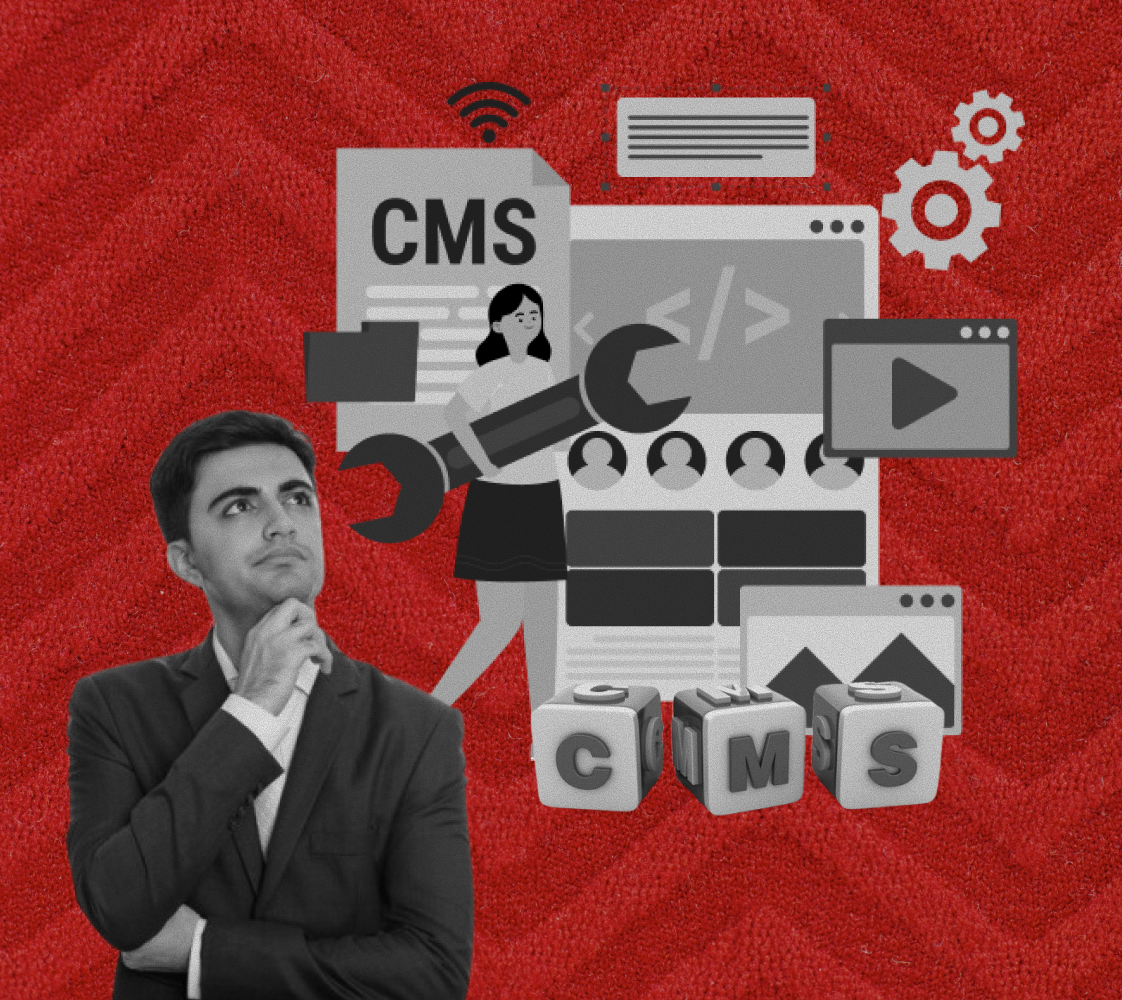If you have been meaning to build a website for your SaaS business, you've probably hit the same crossroads many founders face.
Which builder actually works best? The stakes feel higher when you're not just creating a simple landing page but rather building a digital home that needs to convert visitors, scale with your growth, and reflect your brand's sophistication.
Webflow and Divi both promise to deliver exactly that, yet they take remarkably different approaches to getting you there. One leans heavily into design freedom and modern workflows, while the other banks on flexibility and affordability.
The question isn't really which one has more features. It's about which platform aligns with how your team works, what your SaaS business actually needs right now, and where you're headed next. Let's break down what each brings to the table so you can make a decision that sticks.
Tl;dr:
Here’s a comparison table to highlight the differences between Webflow and Divi:
This table should give you a clear view of how each platform stands on key aspects to help you make an informed decision for your SaaS business.
About Webflow: Overview, Strengths, and Limitations

Webflow sits at an interesting intersection between traditional website builders and professional development tools. It's a visual design platform that lets you build responsive websites without writing code, yet it gives you the kind of control developers typically get with custom builds.
Over 1.1 million websites are made using Webflow, and that number keeps climbing for good reason. At Beetle Beetle as well, we use Webflow to build client projects because it delivers something rare in this space: the ability to move fast without sacrificing quality or design integrity.
What makes Webflow different is how it thinks about the web. Instead of giving you pre-made templates you're stuck tweaking forever, it hands you actual building blocks that mirror how websites are coded underneath. You're working with divs, classes, and flexbox, just visually.
This means when you design something in Webflow, you're not creating a fragile house of cards that breaks the moment you want to customize it.
You're building on web standards, which is why Webflow sites feel native to the web rather than like they're fighting against it. For SaaS businesses that need their websites to feel polished and perform reliably at scale, that foundation matters more than most people realize.
Strengths:
- True design control without code dependencies – You can create pixel-perfect designs that match your brand guidelines exactly, without waiting on developer bandwidth or settling for template constraints that water down your vision.
- Built-in CMS that actually makes sense for SaaS – Managing blog content, case studies, integration pages, or changelog updates becomes straightforward because the CMS is visual and structured, not buried in confusing admin panels.
- Professional hosting and performance baked in – Webflow handles hosting on AWS with automatic SSL, global CDN, and fast load times out of the box, which means fewer vendors to manage and better site speed for conversion.
- Responsive design that works across all devices – You can customize how your site looks on desktop, tablet, and mobile independently, ensuring your SaaS product looks credible and loads properly no matter where potential customers find you.
- SEO controls that give you room to compete – Clean code output, customizable meta tags, automatic sitemaps, and fast page speeds create a strong technical SEO foundation that helps your content rank without constant developer intervention.
- Interactions and animations without JavaScript complexity – You can add sophisticated micro-interactions, scroll effects, and loading animations that make your site feel premium and modern, all through a visual interface that designers can control directly.
Limitations:
- Steeper learning curve than drag-and-drop builders – Webflow assumes you understand basic web concepts like div structure, classes, and responsive breakpoints, which means new users often need a few days to feel comfortable rather than launching something in an afternoon.
- Higher price point as you scale – Once you move beyond starter plans into CMS hosting or need multiple projects, the costs climb quickly compared to budget alternatives, which can feel limiting if you're bootstrapping or managing tight margins early on.
Now, let’s shed light on the Divi website builder.
About Divi: Overview, Strengths, and Limitations

Divi is a WordPress page builder from Elegant Themes that's been around since 2013. It works as both a theme and a plugin, giving you a visual drag-and-drop interface to build websites directly on WordPress.
Nearly 2.3 million websites run on Divi, largely because it offers a straightforward path to customization without needing to touch code. The appeal is simple: you get a lot of flexibility for a flat annual fee, which makes it attractive if you're working within budget constraints or managing multiple sites.
What Divi does well is remove barriers. You don't need to understand web development concepts to start building. The interface feels more like arranging blocks on a page than structuring a website, which means you can get something live relatively quickly.
For SaaS businesses that need a functional site up fast and don't want to invest heavily in design tooling, Divi provides a practical middle ground between basic WordPress themes and more complex solutions.
Strengths:
- Affordable unlimited use license – One payment covers unlimited websites, which is helpful if you're running multiple properties or testing different landing pages without worrying about per-site costs adding up.
- Large library of pre-built layouts and modules – You can pull from hundreds of templates and design elements to speed up the build process, especially useful when you need standard pages like pricing or testimonials done quickly.
- Works within WordPress ecosystem – Since it's built on WordPress, you get access to thousands of plugins for forms, SEO, analytics, and integrations that your SaaS might already rely on.
- Active community and documentation – Years of users mean plenty of tutorials, forums, and third-party resources when you hit problems or want to extend functionality beyond what's included.
Limitations:
- Performance can suffer with complex builds – Divi loads a lot of CSS and JavaScript on every page, regardless of what you're using, which can slow down your site and hurt conversion rates if you're not careful with optimization.
- Design output feels template-driven – Even with customization, Divi sites tend to have a recognizable look that can make your SaaS appear less distinctive or premium compared to fully custom designs.
- Requires WordPress maintenance overhead – You're inheriting all of WordPress's update cycles, security considerations, plugin conflicts, and hosting decisions, which adds ongoing technical management that pulls focus from building your product.
Webflow vs Divi: Head-to-Head Comparison
Design Flexibility and Control
Webflow gives you architectural control. You're building with the same structure professional developers use, just visually. This means when you need something specific for your SaaS brand, you can create it exactly as imagined without hitting arbitrary template walls.
Divi offers flexibility, too, but it's more about rearranging pre-existing modules than creating from foundational elements. You'll move faster initially with Divi, but you'll hit creative ceilings sooner when your design needs evolve beyond what the modules anticipate.
Learning Curve and Speed to Launch
Divi gets you live faster if you're starting from zero. The drag-and-drop interface doesn't assume you know anything about how websites work underneath. You can have something presentable up in a day.
Webflow asks more of you upfront. You need to understand concepts like flexbox, classes, and breakpoints. That investment pays off with cleaner builds and fewer rebuilds later, but if your only goal is getting anything online quickly, Divi removes more friction at the start.
Performance and Technical Output
This is where the gap widens. Webflow generates clean HTML and CSS that loads fast and follows modern web standards. Your site speed matters for conversions, especially in SaaS where trust comes from perceived professionalism.
Divi carries more weight because it loads its entire framework on every page, whether you're using those features or not. You can optimize it with caching plugins and CDN setup, but you're working against the tool rather than with it.
For SaaS businesses where page speed directly impacts trial signups, that difference compounds over time.
Content Management and Scalability
If you're publishing regular content like blog posts, case studies, or product updates, Webflow's CMS feels purpose-built for that workflow. You define content structures visually, and designers can manage everything without developer handoffs.
Divi relies on WordPress's native CMS, which is powerful and familiar but also cluttered with legacy features most SaaS companies don't need.
WordPress shines when you need extensive third-party integrations or community plugins. Webflow excels when you want streamlined content operations that don't require constant maintenance.
Pricing Structure and Long-Term Costs
Divi wins on upfront affordability. One annual payment covers unlimited sites, which is genuinely useful if you're testing multiple landing pages or running separate properties. Webflow charges per site, and costs climb as you add CMS pages or higher traffic limits.
For a single professional SaaS website, though, Webflow's pricing includes hosting, security, and performance infrastructure.
With Divi, you're paying separately for quality hosting, security plugins, caching solutions, and potentially developer time to fix performance issues. The total cost of ownership often balances out, but the budget predictability differs.
Ecosystem and Support
Divi plugs into WordPress's massive ecosystem. Need advanced forms, membership systems, or specific integrations? There's probably a plugin for it. That breadth comes with complexity and the ongoing job of managing updates and compatibility. Webflow's ecosystem is smaller but more curated.
Integrations happen through APIs or tools like Zapier. You get fewer options but less maintenance overhead. For lean SaaS teams, that trade-off often favors Webflow because it reduces the surface area of things that can break.
When Each Makes Sense
Choose Webflow when design quality and site performance directly impact your business outcomes, when you have someone on the team willing to learn the platform properly, or when you're building a primary web presence that needs to scale cleanly as you grow.
Choose Divi when budget is the primary constraint, when you need something functional online immediately, or when you're already invested in WordPress and need to stay within that ecosystem for specific plugins or workflows your business depends on.
Get Your Webflow Website Up and Running in 6 Weeks With Beetle Beetle
The choice between Webflow and Divi ultimately comes down to what you're optimizing for in your SaaS business. If you need speed and affordability above all else, Divi gets you there with minimal friction.
But if your website is a core part of how customers perceive and trust your product, Webflow's design precision and performance foundation become worth the investment.
Neither platform is objectively better in every scenario, but one will align better with where your business is headed and how your team actually works.
At Beetle Beetle, we've seen firsthand how the right platform choice compounds over time. As certified Webflow designers, we help SaaS businesses build websites that don't just look polished but actually support growth without constant rebuilds or performance compromises.
We focus on creating digital experiences that convert visitors into users and scale alongside your product roadmap.
If you're ready to build a website that works as hard as your team does, get in touch with us today for curated Webflow design services that put your business goals first.
FAQs
1. Which is better for SaaS businesses, Webflow or Divi?
Webflow offers more design flexibility and customization, making it ideal for SaaS businesses needing a unique, high-performance site. Divi, on the other hand, is easier to use and cost-effective, especially for those already using WordPress.
2. Is Webflow suitable for beginners?
While Webflow is a powerful tool, it has a steeper learning curve compared to Divi. However, beginners can still benefit from its intuitive design features with a bit of learning.
3. Can I use Divi without WordPress?
No, Divi is a WordPress plugin, meaning it requires a WordPress site to function. Webflow, however, is a standalone platform that doesn’t rely on any external CMS.
4. Which platform offers better SEO tools for SaaS websites?
Both platforms offer SEO features, but Webflow provides more built-in optimization tools out-of-the-box, while Divi relies on WordPress plugins for advanced SEO features.
5. Which platform is more affordable for a SaaS business?
Divi is generally more affordable, offering a one-time fee for lifetime access, whereas Webflow operates on a subscription-based pricing model, which may be more expensive for businesses that need advanced features.
































